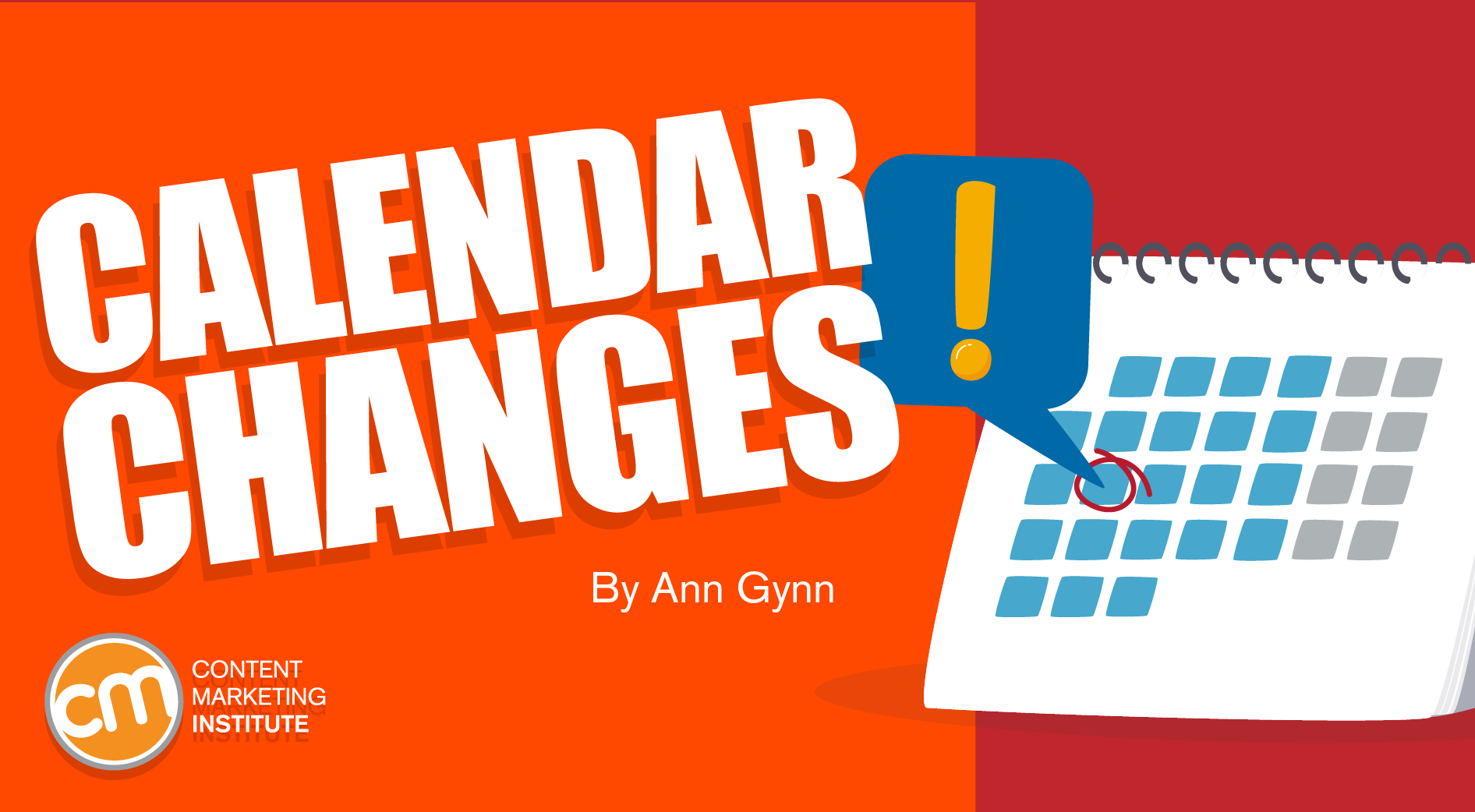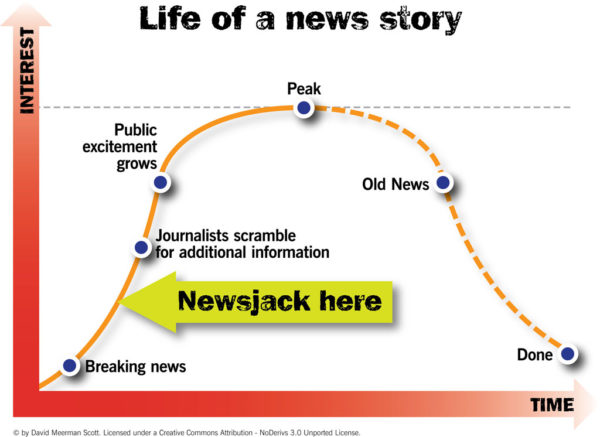MARKETING
When Bad Happens in the World, Should Your Brand Change Its Publishing Plans?

You finally did it.
Your team worked hard to get the content ready for the next 30 days.
It all fits well on the editorial calendar, neatly designed by themes on topics relevant to your audience in formats they want. Even better, the necessary stakeholders approved it all. You uploaded the content and scheduled it for future publishing dates.
Then, something happens that’s out of your control.
A war erupts in Europe. A school shooting happens in the US. A monarch who served for an unprecedented 70 years dies. Romaine lettuce is recalled because of E. coli contamination. A group launches an initiative to expose gender inequality and sexual harassment in Hollywood just before awards season.
At first, the headlines don’t impact your brand. After all, your brand doesn’t operate in a war-torn country or have any direct stake in the business of education, guns, royalty, food, or the television or film industry.
But then the headlines do have an impact. Thoughts and prayers overwhelm social feeds. The 54 countries in the royal Commonwealth enter a period of mourning. Searches about food safety go on the rise.
Unexpected bad news may not directly affect your brand, but it may affect your audience. That means you need to critically evaluate – and consider adjusting – your perfected content marketing calendar.
When headlines fill with bad news, you need to reevaluate your #content calendar. @AnnGynn offers a process to help you decide how to adjust via @CMIContent. Click To Tweet
Is it time to stand down, maintain the status quo, or change things quickly? Use your answers to these two questions to guide your response.
Question 1: On a scale of 0 to 10, how much does this news relate to our company?
Take the romaine lettuce example. If your company sells an alternative salad green to restaurants, the issue would rate a nine or 10. But if your company sells tire valves to auto manufacturers, the issue would be a zero.
Question 1 for content marketers: How much does this headline relate to our company, asks @AnnGynn via @CMIContent. Click To Tweet
Score 0 to 6
No need to change your content. Proceed to the next question.
Score 7 to 10
Change up your regularly scheduled content programming.
How? Quickly pull together your content team and other key stakeholders. Schedule a brainstorming session or have a virtual conversation:
- Detail all ways your brand is or could be connected to the headline.
- Look in the archives to see if you’ve already published content that could be used in this scenario.
- Develop a list of new content ideas. Group them in three buckets: (1) common but necessary, (2) out of the box, and (3) interesting but not a fit for our brand.
- Identify the resources available to repurpose the old content and create new content.
- Republish old but still useful content as soon as possible. (The old content serves as a bridge until you develop fresher angles.)
- Prioritize your new ideas. Execute the first one or two.
- Publish the new content.
- Join online conversations with helpful (not promotional) content.
TIP: Maintain your brand voice and tone. Don’t sensationalize your content to take advantage of the situation. Provide factual information, address safety concerns, and share solutions.
Question 2: On a scale of 0 to 10, how much does this news affect our target audience?
Even when the headlines don’t directly affect or relate to your brand, they can affect your audience. And while you don’t need to change your content creation plans, you may need to change your publishing schedule.
Even when headlines don’t directly affect your brand, they can affect your audience, says @AnnGynn via @CMIContent. Click To Tweet
It’s time to go back to your audience personas and other data. Use what you know about your audience to see how they are or could be affected.
If you don’t have enough data to assess the potential effects, use a neutral rating of five. It’s OK if your personas don’t cover every characteristic of your audience. Frankly, they shouldn’t. After all, they’re intended to communicate the qualities and behavior that relate to why the person would interact with your industry, brand, products, etc. And yet, you know, these people have lives outside of that environment.
The earlier examples I mentioned cover topics involving war, death, guns, illness, sexual harassment, etc. Your buyer personas may not cover those topics, but the big news may be important to the real people behind your personas.
Score 0 to 3
No need to change your publishing schedule. Your audience isn’t likely to change its content consumption habits.
Score 4 to 6
Your existing audience data isn’t sufficient. Do more research.
Reach out to a handful of your audience members to ask their opinion. Look at your social feeds to see if industry influencers are talking about the topic. Check community forums to see if members are straying from the designated topic to talk about the news. After that, give yourself a new score, which should fall into one of the other two groups.
Score 7 to 10
Reassess your publishing schedule.
When your audience is affected, they’re looking for information on the headline topic. Your content will go unnoticed because their content priorities have shifted. Stop or decrease your content promotion.
If going along with business as usual would seem insensitive or worse, suspend your publishing altogether. But don’t just disappear – let your readers know why you aren’t going to be populating their social feeds, inboxes, etc. Work with the team to craft a notice that is direct, not preachy or self-righteous, such as:
“Your priorities are understandably focused elsewhere at this time. We don’t want to be an unnecessary distraction. So based on input from our audiences and internal teams, we are suspending our regular publishing schedule. However, we’re still hard at work – so if we can answer any questions for you, please don’t hesitate to contact us.”
TIP: If you stop or minimize your content promotion, adjust your calendar to avoid publishing any high-profile, pillar, or other substantial content until your normal promotion process resumes.
Reassess every day (or several times a day, depending on the news) to identify the appropriate time frame to resume publishing and/or promoting. Ask:
- Has the chatter diminished sufficiently in news feeds so our content would be noticed again?
- Is the target audience talking about non-headline news topics?
- What do analytics tell you? If metrics dropped during the news event, are they increasing now?
This timeline created by David Meerman-Scott around newsjacking for good also works as a guide when the news is bad:

Be prepared
Being proactive means monitoring potential news triggers. You and your team should regularly consume news beyond your industry. Identify and monitor a list of tangential topics that could activate your company’s content reaction. Know your geography and weather phenomena.
Think about it – a tornado may not merit more than a blip in national news, but the impact on locals could be extensive. And if that’s your audience, you’ll want to know about the impact so you can adjust your content marketing accordingly.
Don’t wait to prepare. Start by customizing the process I’ve suggested to fit your brand, content marketing team, and audience. It’s much easier to react to the news (and the internal question “what do you think we should do?”) when you have an approved assessment process.
Updated from a March 2020 article.
In appreciation for guest contributors’ work, we’re offering free registration to one paid event or free enrollment in Content Marketing University to anyone who gets two new posts accepted and published on the CMI site in 2023.
HANDPICKED RELATED CONTENT:
Cover image by Joseph Kalinowski/Content Marketing Institute













You must be logged in to post a comment Login